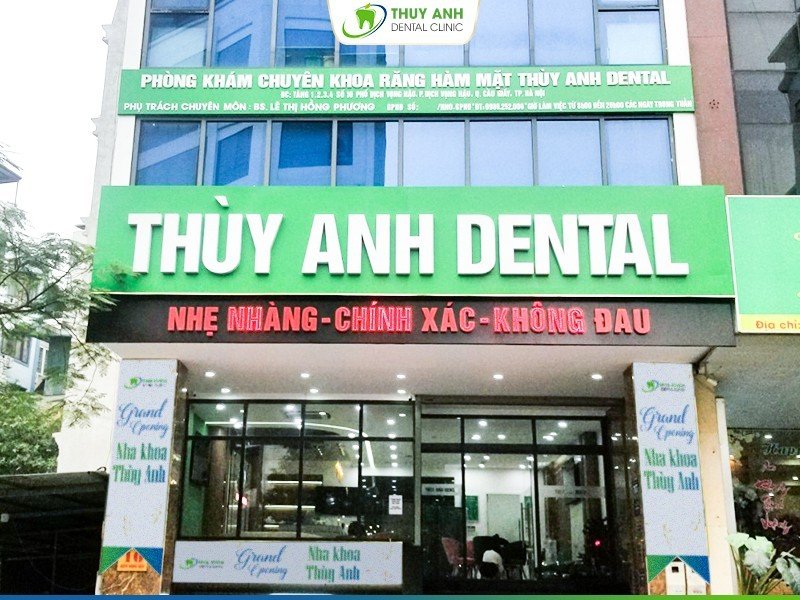Is a dental implant in Vietnam painful?
For many international visitors coming to Vietnam for dental treatment, one of the most common questions is: “Is getting a dental implant in Vietnam painful?” Thanks to advancements in technology and modern surgical techniques, today’s implant procedures in Vietnam have been optimized to be minimally invasive, low-pain, and fast-recovery.
Is getting a dental implant in Vietnam painful?
Fear of pain during implant placement is very common, especially among first-time patients or those who previously had unpleasant dental experiences. However, modern implant dentistry is virtually painless, made possible by the following factors:
1. Modern anesthesia – complete loss of pain sensation
Throughout the implant placement, the surgical area is numbed with local anesthesia or sedation, ensuring you feel no pain during the procedure.
After the surgery, a mild ache or soreness may appear; this is your body’s natural healing response and is completely normal.
2. Precise implant techniques – shorter operating time
Advanced imaging and 3D-guided surgical templates allow dentists to determine the exact implant position, angulation, depth, and bone quality.
A single implant typically takes only 10 -15 minutes to place, reducing surgical trauma and postoperative discomfort.
3. Minimal swelling and discomfort after surgery
Once the anesthesia wears off, slight soreness or mild swelling is common because implant surgery is a minimally invasive procedure. These symptoms reduce significantly within 24 – 72 hours and almost completely stabilize after 5 – 7 days.
Many patients from Australia, the U.S., and France report that implant placement is much more comfortable than expected and often less painful than tooth extraction.

Painless implant procedure at Thuy Anh Dental Clinic, Vietnam
A successful and comfortable implant experience depends not only on the dentist’s skill but also on a standardized medical workflow to ensure accuracy, safety, and minimized pain.
At Thuy Anh Dental Clinic, the implant process follows international protocols, including the steps below:
Step 1: Comprehensive examination and implant assessment
The dentist evaluates the missing-tooth site and analyzes key factors such as:
- Number of missing teeth
- Angulation of adjacent and opposing teeth
- Thickness of gums and bone
- Risk of bone deficiency (which may require grafting)
- Medical history, blood pressure, and current medications
This is a critical step that determines accuracy and long-term success. Patients with long-term tooth loss or severe bone resorption will receive detailed treatment planning with transparent costs.
Step 2: Cleaning – sterilization – painless anesthesia
Before surgery, patients undergo:
- Full-mouth cleaning
- Antiseptic preparation of the surgical area
- Local anesthesia for painless implant placement
The surgical room follows strict sterilization protocols to ensure maximum safety.
Step 3: Implant placement and temporary tooth
Under anesthesia, the dentist places the implant according to the pre-designed 3D surgical plan.
A single implant typically requires 10–15 minutes.
Main steps include:
- Creating the osteotomy site
- Expanding and placing the implant
- Soft tissue adjustment and suturing (when necessary)
For flapless implant surgery, no incision is required—helping patients recover faster and experience significantly less pain. For aesthetic front teeth, a temporary crown is provided immediately to maintain appearance and function.
Step 4: Final prosthetic crown placement
After osseointegration:
- 1–3 months for cases without bone grafting
- 4–6 months for bone-grafted cases
The dentist proceeds with:
- Digital impressions using Shining 3D intraoral scanners (more accurate than traditional impressions)
- Sending data to the dental laboratory for crown fabrication
- Attaching the crown via an abutment
- Bite calibration using T-Scan Novus
This ensures the implant crown fits precisely, functions strongly, and looks as natural as a real tooth. Patients are then given home-care instructions and scheduled checkups. With proper hygiene, implants can last a lifetime.
How to reduce discomfort after implant surgery
Although most patients feel only slight soreness, you can adopt these tips to speed up healing:
- Cold compress for 10–20 minutes: Helps reduce swelling within the first 24 hours.
- Take medication as prescribed: Do not change dosage by yourself. Pain relievers and anti-inflammatories typically work within hours.
- Eat soft foods for 5–7 days: Choose porridge, soup, smoothies, yogurt, or soft meals. Avoid extremely hot, spicy, or chewy foods.
- Maintain good oral hygiene: Use saline solution and a soft toothbrush. Do not rinse vigorously in the first 24 hours.
- Avoid smoking and alcohol: They delay bone integration.
- Rest adequately: Avoid intense exercise to support faster healing.
Thanks to modern techniques and standardized medical protocols, dental implant placement at Thuy Anh Dental Clinic in Vietnam is nearly painless and offers long-term results comparable to natural teeth. If you are seeking a reliable destination for tooth replacement, implant dentistry is the most durable solution and Vietnam is an ideal choice thanks to its high quality, reasonable costs, and experienced implant specialists.
Thuy Anh Dental Clinic – Leading dental care system in Hanoi and Ho Chi Minh City
Hanoi Locations
- No. 181 Yen Lang Street – Dong Da District – Hanoi
- No. 10 Dich Vong Hau Street – Cau Giay District – Hanoi


Ho Chi Minh City:
- No. 162 Bui Thi Xuan Street, Ben Thanh Ward, HCMC

Specialized in:
Orthodontics (Braces) – Dental Implants – Full Jaw Dental Implant (All-on-4) – Wisdom Tooth Removal – Gummy Smile Treatment – Porcelain Crowns – Veneers – Temporomandibular Joint (TMJ) Disorder Treatment
Hotline – Whatsapp: +84 814.650.650
Facebook: fb.com/Nhakhoathuyanh.HN
YouTube: youtube.com/thuyanhdentalinvietnam








